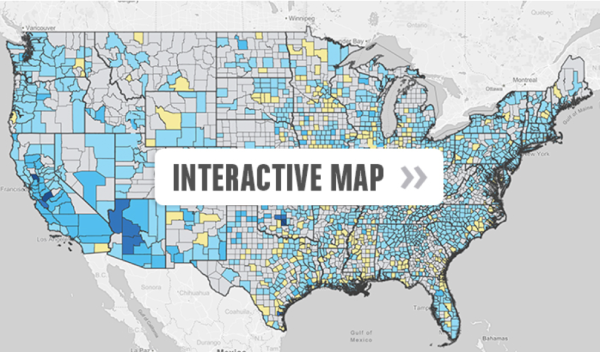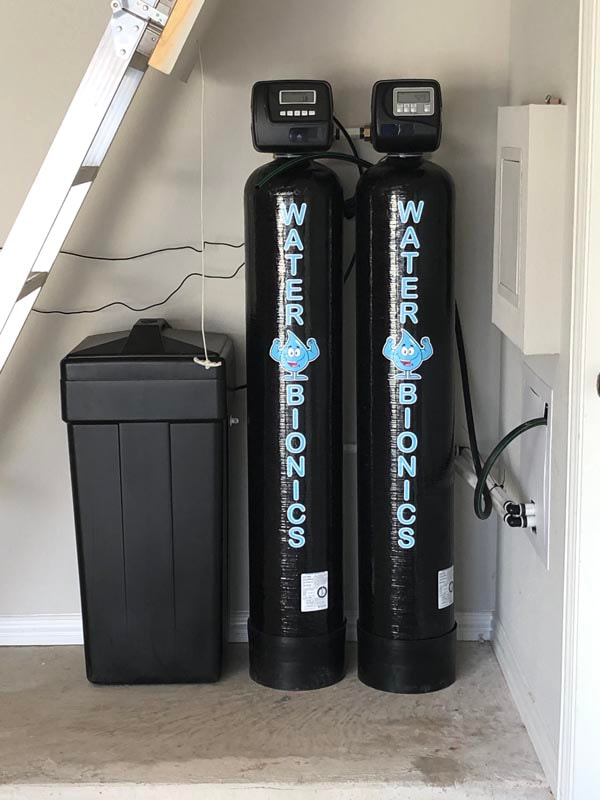Your First Diagnostic Tools Are Your SensesYou can, at times, see, taste, smell, and feel contaminated water. Water that is red, orange, yellow, brown, or cloudy can signal iron, rust, or other contaminants in the mains or your household plumbing. Tannins from decaying vegetation and leaves can also give water a yellow or brownish hue.
The Environmental Working Group (EWG) has compiled a database of 30 million water quality tests. Check your water quality on WEG's database or request a free water analysis. We will come to your home or business to discuss your concerns and work together to find the right solution. |
Common Water Quality Issues
|
Scale Deposits
Hard water is a common quality of water which contains dissolved compounds of calcium and magnesium and, sometimes, other divalent and trivalent metallic elements. LEARN MORE Bad Taste & Smell
While taste issues are only noticed at the faucet(s) where water is used for drinking, bad smelling water can be noticeable any place in or around a home or office where water is used. LEARN MORE Corrosion
The corrosion of pipes and plumbing fixtures can cause a bevy of problems with your water. Corrosion is the gradual decomposition or destruction of a material by oxidation or chemical actions. LEARN MORE |
Staining
Discoloration usually results from the exposure of these metals to oxygen, known as oxidation. In your plumbing, water often has limited exposure to oxygen, keeping any soluble (ferrous) iron or manganese in solution. LEARN MORE Cloudiness & Discoloration
It isn’t just fixtures and appliances that can be discolored and stained. Discoloration of water is another sign of impurities. LEARN MORE Contamination
The U.S. EPA has set standards for more than 80 contaminants that may occur in drinking water and pose a risk to human health. LEARN MORE |
Chromium 6Chromium is a tasteless and odorless and tasteless metallic element naturally found in rocks, soil, volcanic dust, plants, and animals.
The most common forms of chromium that occur in water are:
Chromium-3 is an essential dietary element found in many fruits, vegetables, grains, meats, and yeast. Chromium-6, according to the EPA, occurs naturally in the environment from the erosion of natural chromium deposits and from industrial processes such as leakage, poor storage, or inadequate industrial waste disposal practices. If Chromium 6 sounds familiar, that's because it is the same chemical that made Erin Brockovich famous. The Environmental Working Group found that 75% of drinking water samples were contaminated with Chromium 6. |
Check to see if you are among the 218 million American's whose water is contaminated with Chromium-6 (the Erin Brockovich chemical).
|
|
PFOA, PFOS, and PFC
PFC, PFOA, and PFOS are chemicals found in household and industrial products such as stain repellents, fire retardants, lubricants, pesticides, and more. They commonly found in non-stick cookware, stain resistant carpeting and fabrics, and oil-resistant coatings on food packaging.
PFCs, also known as PFASs, have been linked to cancer, thyroid disease, weakened immunity and other health problems. The Environmental Working Group (EWG) maintains an interactive map of PFC, PFOS, and PFOA contamination. |
Lead ContaminationAccording to the New York Times, The Environmental Protection Agency says streams tapped by water utilities serving a third of the population are not yet covered by clean-water laws that limit levels of toxic pollutants.
Unsafe lead levels are not limited to Flint, Michigan. CNN reports that more than 5,300 water systems are in violation of the EPA's lead and copper rule, a federal regulation to safeguard America's drinking water from its aging infrastructure. Violations include:
The NRDC report reveals that the EPA is also aware that many utilities "game the system," using flawed or questionable testing methods in order to avoid detecting high levels of lead. |
Other Common ContaminantsIt’s bad enough to be able to see, smell, or taste a contaminant. But what if your water looks, smells, and tastes just fine — is it? Not necessarily.
Microbial and organic contaminants cannot always be detected by human senses. You might go years before realizing a problem exists. Many folks never become suspicious until people in the community start to get sick. Water near agricultural areas may contain harmful organic material from pesticide or fertilizer application. Chemicals from pesticides and fertilizers in water may increase cancer risk and reproductive problems and can impair eye, liver, kidney, and other body functions. Similar problems can result from exposure to water near industrial plants. Some common waterborne contaminants include:
|
|
Effects of Waterborne Contaminants on Health
The U.S. EPA has set standards for more than 80 contaminants that may occur in drinking water and pose a risk to human health. The contaminants fall into two groups according to the health effects that they cause.
Acute Effects Acute effects occur within hours or days of the time that a person consumes a contaminant. People can suffer acute health effects from almost any contaminant if they are exposed to extraordinarily high levels (as in the case of a spill). In drinking water, microbes, such as bacteria and viruses, are the contaminants with the greatest chance of reaching levels high enough to cause acute health effects. Most people’s bodies can fight off these microbial contaminants the way they fight off germs, and these acute contaminants typically don’t have permanent effects. Nonetheless, when high enough levels occur, they can make people ill, and can be dangerous or deadly for a person whose immune system is already weakened. Chronic Effects Chronic effects occur after people consume a contaminant at levels over EPA’s safety standards over the course of many years. The drinking water contaminants that can have chronic effects include chemicals (such as disinfection byproducts, solvents and pesticides), radionuclides (such as radium), and minerals (such as arsenic). Examples of these chronic effects include cancer, liver or kidney problems, or reproductive difficulties. |
|
|
What's in Your Tap Water?
The Environmental Working Group (EWG) has been testing tap water since 2010 and has conducted a water quality analysis of 30 million state water records.
Enter your zip code to check EWG's analysis of the water in your area. You can also check to see if you are among the 218 million American's whose water is contaminated with Chromium-6 (the Erin Brockovich chemical). |
|
Whole House Water Filtration & Softening
In-home water treatment provides the final barrier to prevent contaminants or health hazards from being ingested by you, a family member or pet. It can also address the impurities that lend an unattractive taste, smell, or appearance to your drinking water.
We have over 21 years of experience in the water industry. Mark Williams is a Class-3 Water Treatment Specialists through the California Commission on Environmental Quality (CCEQ) and serves on the board of California Water Quality Association (TWQA) as a director. Water Bionics is also a member of the Water Quality Association (WQA). Our main focus is treating the water coming into your home and creating the purest and best quality water you can get - just like it was intended to be by mother nature. We offer discounts to military personnel, first responders, teachers and those in civil service. |
|
ABOUT WATER BIONICS
Water Bionics is a leading provider of
advanced filtration and water treatment solutions in Orange County, California. Contact Us: 714-814-8915 |
WATER TREATMENT SOLUTIONS
Free Water Testing
Water Treatment Repair & Installation Whole House/Building Water Filtration Well Water Solutions Reverse Osmosis & Alkalinity Units |
© Copyright 2022 Water Bionics. All Rights Reserved.
|















